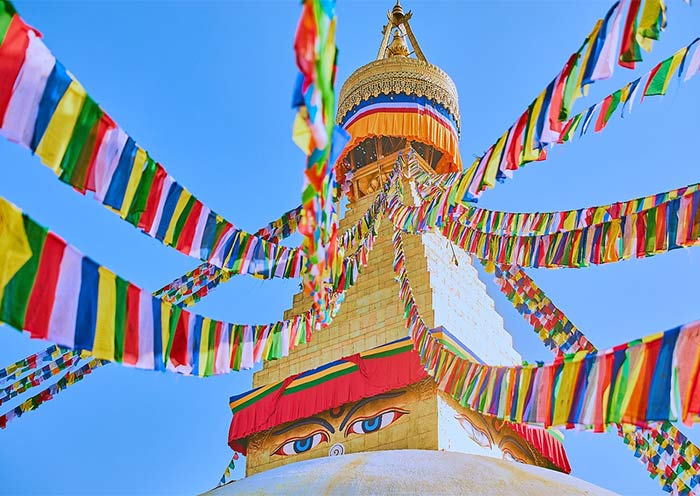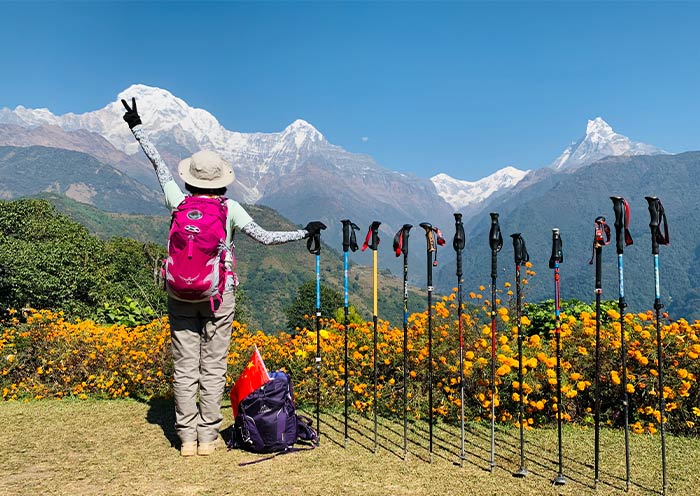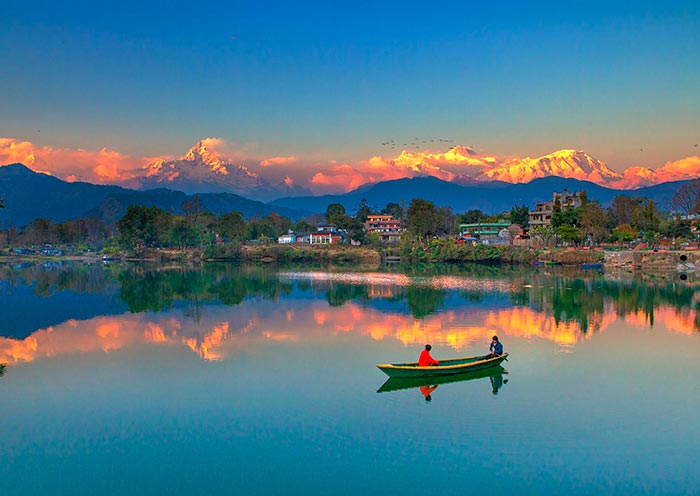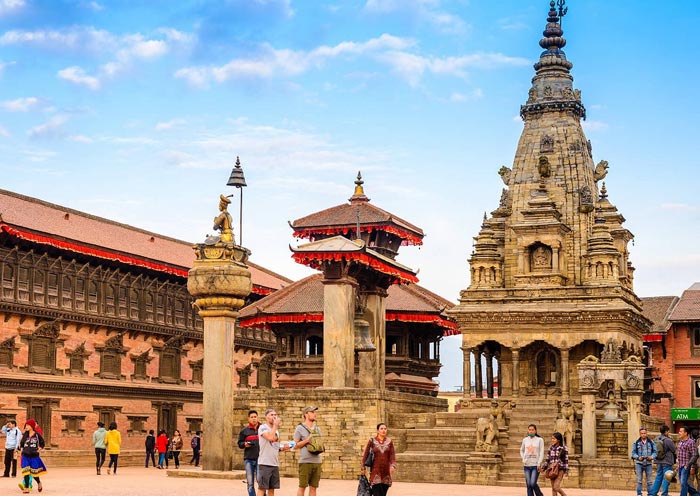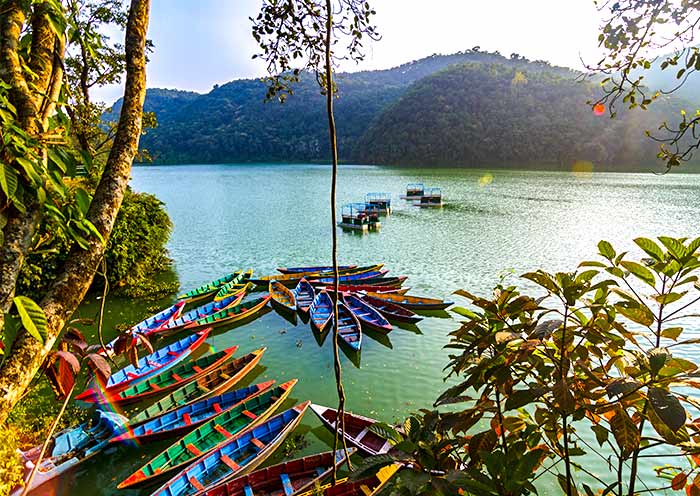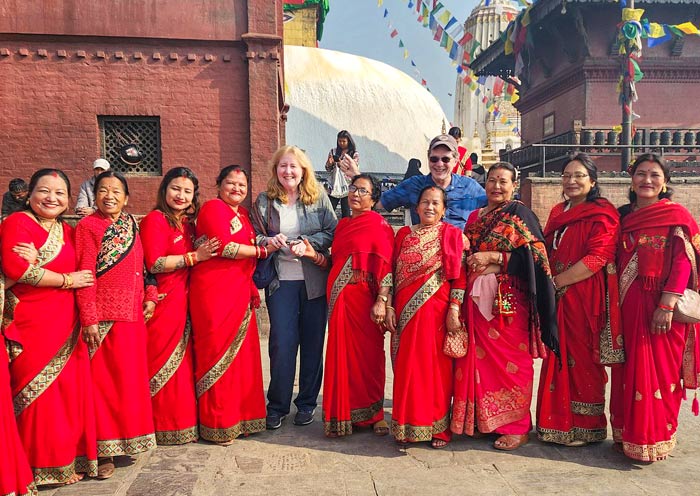Reason to Visit Chitwan National Park with Facts
Here are some amazing facts about Chitwan National Park: Established in 1973, Chitwan National Park in Nepal is a vast 93,200-hectare or 932 square kilometers haven and a UNESCO World Heritage Site.
Chitwan the National Park of Nepal nestles within the Terai lowlands, bordering the foothills of the Himalaya. Chitwan National Park stretches across four districts: Chitwan, Nawalparasi, Parsa, and Makwanpur. This National Park of Nepal offers a chance to explore the last remnants of the Terai region, featuring diverse ecosystems with grasslands, forests, and the Rapti River.
Here's why Chitwan National Park is a must-visit:
- Amazing Animals: Encounter over 700 species of wildlife, including the majestic Asiatic rhinoceros and elusive Bengal tiger.
- Diverse Ecosystems: Explore vibrant grasslands, dense forests, and the life-giving Rapti River, each teeming with unique wonders all in Chitwan National Park.
- Rich Cultural Heritage: Discover the indigenous Tharu community and explore two significant religious sites.
- Conservation Success: In Chitwan National Park you can witness a shining example of successful government-community partnership in biodiversity conservation.
- Unforgettable Safari: Embark on an exciting safari through vast grasslands and lush forests in Chitwan National Park. Experience the wild like never before!
- Budget Friendly: Take a safari in Chitwan National Park, it's a much better alternative to the safari in Africa in terms of travel cost.

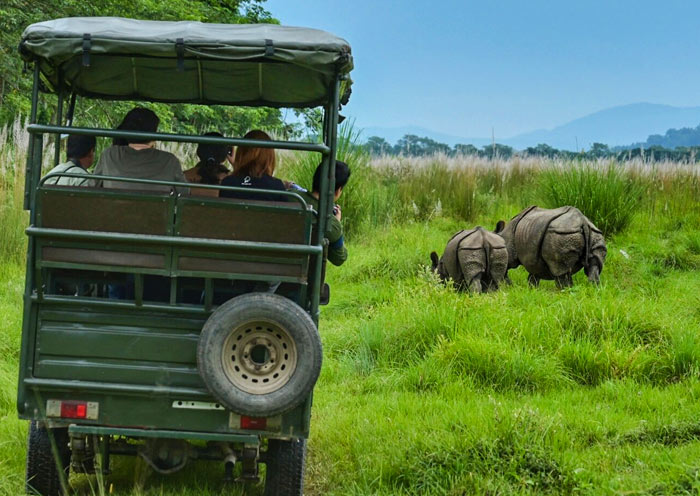
How to Visit Chitwan National Park With All Great Things to Do: Safaris!
Tigers & rhinos roam free, spotted on jeep safari. Rare birds & reptiles join the show. Nepal's wild heart beats in Chitwan National Park, Safaris here offer a unique blend of classic safari thrills and endangered wonders.
Jeep Safari in Chitwan National Park: Cover Most Distance with Ease
Explore the park's diverse ecosystems on a thrilling jeep safari, ideal for spotting a variety of animals in Chitwan National Park. With the humming engine of a jeep, you can cover longer distances and witness diverse terrains. Jeep Safari is most ideal for professional photographer with full set of equipment and those whose prefer a less physically demanding safari.
Canoeing/Boating Safari in Chitwan National Park: Quietly Gliding Through the Crocodiles
Enjoy a peaceful canoe ride on the Rapti River. Riding in a canoe is quiet, making it perfect for birdwatching and spotting crocodiles. Crocodiles usually don't come out sunning themselves until the sun rises high. So there's less chance to spot them in the early morning.
Records of tourists being attacked by crocodiles are rare. However, unless you're Marvin the robot from 'The Hitchhiker's Guide to the Galaxy,' who doesn't mind losing a hand, Do Not Dip your hand in water.
Walking Safari in Chitwan National Park: Most Exciting Safari Experience There is!
The most down-to-earth safari experience you can have in Chitwan National Park! While there are inherent risks involved, it's generally safewhen done with reputable guides.
It is mandatory to have 2 local guides with protective equipment accompany you on a walking safari in Chitwan National Park.
Ultimately, the most significant factor in your safety is your guide's deep knowledge of the natural environment. To discover the magic of the jungle through the eyes of an expert, Contact Us today!
How to Get a Cultural Immersion in Chitwan National Park: Indigenous Tharu Community
Learn about the indigenous Tharu community, their unique culture, language, and Nepal's cuisines.
Note: All safaris in Chitwan National Park, especially walking safaris, require extra caution. At AOT, your safety always comes first. We have professional guides to ensure a safe safari in Chitwan Park for you. There are safety tips at the end of this article, so please read on to the end.
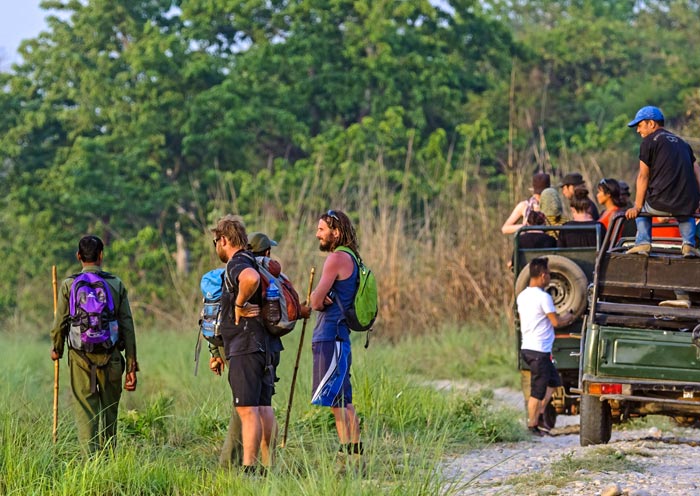
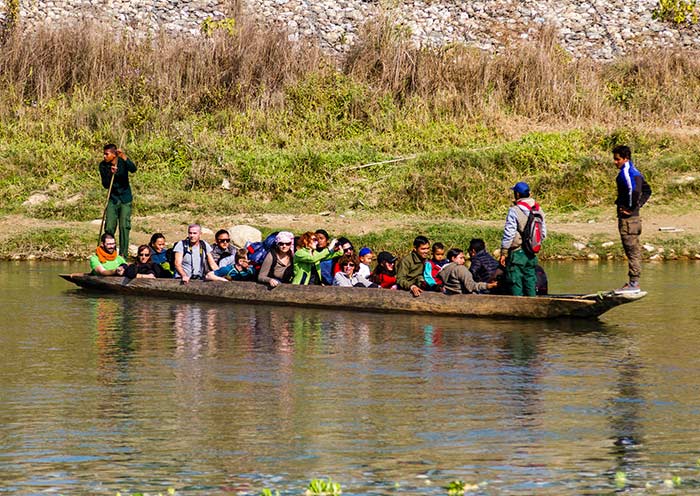
Chitwan National Park Wildlife: Fantastic Beasts and How to Find Them
Chitwan National Park is home to a diverse range of animals. Here are some of the notable animal species you can find in the National Park of Nepal:
- Mammals: Bengal Tiger, One-Horned Rhinoceros, Leopard, Sloth Bear, Gaur, Wild Elephant, Four-horned Antelope, Rhesus Monkey, Indian Pangolin.
- Birds: Bengal Florican, Swamp Francolin, Grass Warblers, Oriental Darter, Bitterns, Storks, Kingfishers, Peafowl, Jungle Fowl, Cuckoos, Flycatchers.
- Reptiles: Golden Monitor Lizard, Python, Mugger Crocodile, Gharial.
Single-horned Asiatic Rhinoceros: Shining Example of Nepal's Preservation Effort in Chitwan National Park
Be amazed by the single-horned Asiatic rhinoceros, a crucial conservation success story in Chitwan National Park. Thanks to dedicated efforts of Nepal, the National Park boasts a thriving population of over 700 individuals as of the latest rhino census conducted in May 2023. This number reflects a positive trend compared to the early 2000s, when Chitwan's rhino population hovered around 544.
You'll have a good chance of spotting these majestic herbivores grazing in the grasslands or wallowing in mud pools. Do follow exact instruction from you guides since these rhinos can be a bit cranky at times.
Royal Bengal Tiger: Witness King of Jungle in Action in Chitwan National Park
Feel the thrill of searching for the elusive Royal Bengal Tiger, the most iconic apex predator in the National Park of Nepal. With the latest population estimates suggesting around 128 individuals, sightings are rare but incredibly rewarding. Hunter or prey, keep your eyes peeled either way!
Beautiful & Rare Birds: Chitwan National Park, Sanctuary for Birds
Embrace Chitwan National Park, a birder's paradise with over 600 species! Spot vibrant Lesser Adjutant Storks with their striking pouched beaks, listen to the melodic calls of Black-crested Bulbuls, and keep an eye out for the curious Asian Openbill Storks with their spoon-shaped bills. Don't miss the elusive Grey-crowned Prinia, a tiny songbird found in the park's grasslands.
Crocodiles: Also Indigenous Residents of Chitwan National Park
Observe the prehistoric Gharial and Marsh Mugger crocodiles sunning themselves on riverbanks or gliding silently through the water. Visit the breeding center near the park headquarters in Kasara, learn about their crucial role in the ecosystem and how conservation efforts have led to their recovery.
Elephant Breeding Centre: Intricately Connected with Local Life Style in Chitwan
Witness the heartwarming sight of baby elephants frolicking with their mothers at the Khorsor Elephant Breeding Centre, established in 1985. Learn about responsible tourism practices and how these gentle giants contribute to patrolling and conservation research within the park.
Side note: As a responsible travel company, we at Asia Odyssey Travel stand firmly against animal cruelty in any form. However, in Chitwan National Park, it's more complicated: Elephants are used not only for tourism, which funds their upkeep, but also for patrolling remote forest areas against poaching. This in turn helps preserve the diversity of Chitwan National Park.
What we could ensure you is that a lot of effort has been made to improve the well-being of elephants in the National Park of Nepal. As of 2025, elephant riding in Chitwan National Park is not completely banned but significantly reformed. Traditional elephant back safaris for wildlife viewing have been phasing out. Instead, elephants, guided by mahouts, are now used as walking guides. Additionally, improved welfare practices have been implemented to ensure better living conditions and treatment for the animals. In short progress has been made!
How are the majestic animals doing in Chitwan National Park today? You might gain more insights by visiting Elephant Breeding Centre yourself!

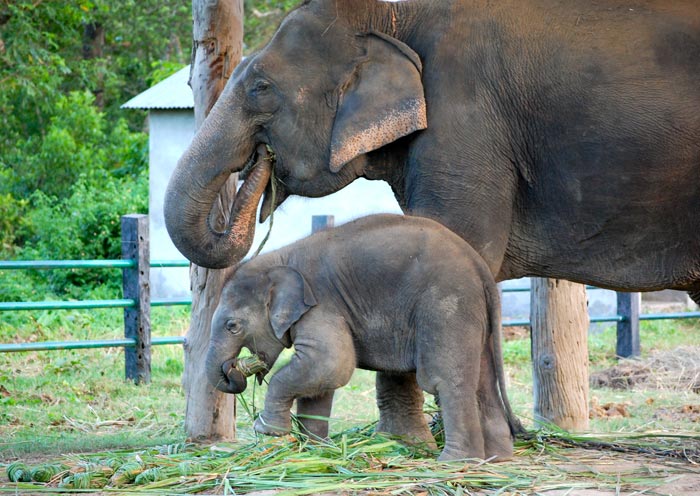
How to Stay in Chitwan National Park Hotels: Nature is Home to All
There are numerous resorts hotels in and around the Chitwan National Park offering a range of services and facilities. Some popular hotels include Hotel Park Safari, Hotel Park Land, Center Park Resort. If you prefer something more luxurious, the 5-star Barahi Jungle Lodge and the 5-star Kasara Chitwan offer exquisite stays for your deep venture into the wild.
Unique Accommodation at Chitwan National Park: Living in a Tree maybe?
Tree Houses: Nestled amidst the forest canopy, these elevated havens offer stunning views and a true immersion in the jungle atmosphere.
Jungle Tower Stay: For a unique excitement, you can opt for a tower night stay inside the park. This offers a close look at the flora and fauna residing inside the park.
Jungle Camps: An adventurous overnight stay in a rustic campsite, listening to the sounds of the jungle and waking up to the sights of wildlife.
Tharu Village Homestays: Experience the local culture firsthand by staying with a Tharu family in their traditional village homes.
| Type | Features & Highlights | Price Range | Suitable for | Examples |
|---|---|---|---|---|
| Tree Houses | Elevated structures amidst the canopy, stunning views | $150-$400+ per night | Nature lovers, eco-tourists, adventure seekers | Machan Tree House Resort, The Fern Residency Tree House |
| Jungle Tower Stay | Unique experience in a tower within the park, close-up views of nature | $100-$300+ per night | Wildlife enthusiasts, photographers, adventurers | Chitwan Jungle Tower, Rhino Observation Tower |
| Jungle Camps | Rustic campsites, authentic jungle ambiance, listening to nature's sounds | $50-$200+ per night | Budget-conscious travelers, backpackers, nature lovers | Chitwan National Park Camping |
| Tharu Village Homestays | Immerse in local culture, stay with a Tharu family, learn about traditions | $30-$100+ per night | Culturally curious travelers, off-the-beaten-path seekers | Jungle Tharu Homestay, Srijana Tharu Homestay |
| Hotels & Resorts | Varied amenities like pools, spas, restaurants, comfortable rooms | $100-$800+ per night | Families, luxury travelers, convenience seekers | Hotel Park Safari, Hotel Park Land, Center Park Resort, Kasara Chitwan, Barahi Jungle Lodge, Green Park Resort, Meghauli Serai, River Bank Jungle Resort |
Note: Prices can vary greatly depending on season, specific amenities, and room/tent type within each category. It's best to check individual properties for accurate pricing.
As a seasoned tour operator specializing in Himalayan regions, we know the best accommodations and can get you the Best Deal. Contact Us to lock your dream stay in Chitwan National Park. Start your epic Himalaya Journey!
How to Get to Chitwan National Park from Kathmandu
- By Air: The quickest way is to fly from Kathmandu to Bharatpur, which is about 18 km or 11 miles from Sauraha, a popular base for visitors to the park.
- By Private Transfer: You can hire a private vehicle from Kathmandu, which takes about 6 hours.
- By Bus: There are tourist buses from Kathmandu to Sauraha, the journey takes around 6-7 hours.
- By Helicopter: Wanna travel posh? Charter a 30-minute helicopter ride from Kathmandu to Bharatpur, offering stunning views of the Himalayas and Terai plains.
- Get to Nepal: How to Get to Nepal from other countries
How to Choose Best Time to Visit Chitwan National Park Nepal
The best time to visit Chitwan National Park would be the dry season (October to March), more specifically, February and March would be the best months to visit Chitwan National Park for most activities. However, the accurate time varies depending on the activities you prefer just like the Best Time to Visit Nepal in general.
| Activity | Best Time | Reason |
|---|---|---|
| General Wildlife Sightings | Dry season (October to March) | Favorable weather conditions with clear skies, ideal circumstances for wildlife sightings. |
| Bird Watching | September to November and February to April | Migratory birds fly in during these periods, adding to the avian abundance. |
| Tiger Spotting | End of dry season (April and May) | Wildlife gathers at waterholes due to the heat, increasing the chances of spotting tigers. |
| Pleasant Weather | October to early March | Temperatures are pleasant, making it a pleasant time to visit. |
Please note that these are general guidelines and actual conditions may vary. Always check the latest conditions or simply Contact Us for travel tips.
How to Stay Safe in Chitwan National Park
While Chitwan National Park is generally considered safe for tourists, there are inherent risks involved in visiting any wildlife reserve. Safety is definitely a concern, but not necessarily a major one if you follow park regulations and take necessary precautions. Here are Safety Tips for visiting Chitwan National Park.
General Safety Tips in Nepal's Chitwan National Park
- Stay with your guide: Always follow your guide's instructions and remain within the designated areas. They are trained to navigate the park safely and handle potential encounters with wildlife.
- Respect wildlife: Never approach, feed, or attempt to touch any animal. Maintain a safe distance and observe from designated viewing areas.
- Be aware of your surroundings: Watch your step, especially near water bodies. Be cautious of snakes and other hazards.
- Respect the environment: Avoid littering and follow sustainable practices.
- Bring insect repellent: The routine must-bring for any jungle safari.
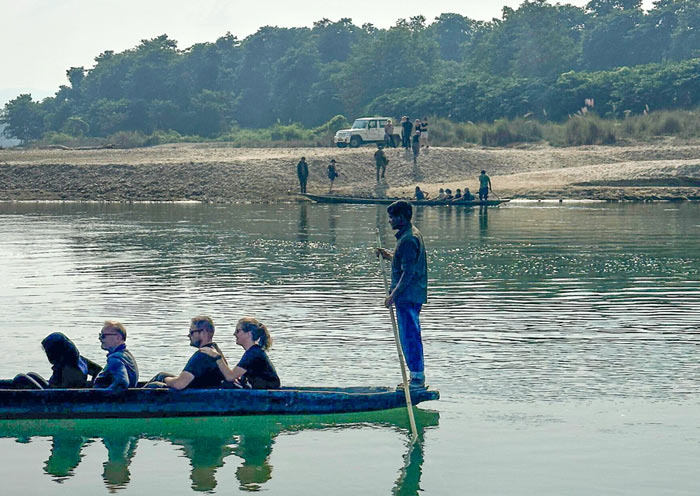
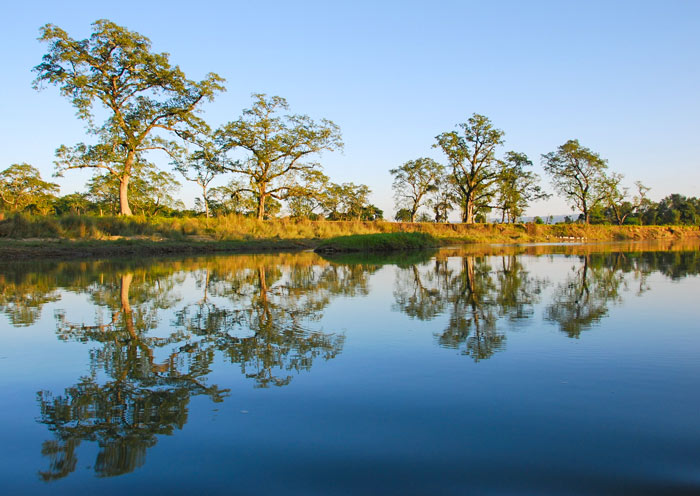
Safety Tips for Specific Activities in Chitwan National Park
- Walking Safaris: Be prepared for uneven terrain, potential wildlife encounters, and possible heat exhaustion. Ensure your guide is equipped with appropriate tools and knowledge.
- Jeep Safaris: Remain seated and hold on tightly while the jeep navigates rough terrain. Don't lean outside the vehicle.
- Boating Safaris: Wear a life jacket and follow safety regulations. Do not put your hand in water. Additional Dos & Don'ts in Nepal's Chitwan National Park
- Ensure you have travel insurance to protect yourself in case of medical emergencies or unexpected situations
- Stay updated and informed about any park advisories or warnings prior to your visit.
- Show respect by being mindful of local customs and traditions, especially when visiting Tharu villages.
- Minimize your impact by selecting responsible tourism operators that prioritize minimizing environmental harm and supporting local communities.
How & What to Pack for Chitwan National Park
Clothing:
- Neutral and earth-toned clothes: Better for blending with the environment and reducing insect attraction.
- Long-sleeved shirts and pants: Protects from sun, insects, and thorns. Choose breathable, quick-drying fabrics.
- Comfortable closed-toe shoes: Ideal for rough terrain and relaxation. Open-toed shoes can lead to insect bites and injuries.
- Hat and sunglasses: Crucial for sun protection. Opt for a wide-brimmed hat for extra coverage.
- Light rain jacket: Handy for unexpected showers. Choose a packable, waterproof option.
Essentials:
- Biodegradable insect repellent: Deet-based repellents are effective. Check park regulations and consider natural alternatives.
- Sunscreen: Opt for a high SPF, broad-spectrum sunscreen for sensitive skin.
- First-aid kit: Include basic supplies and consult a doctor for specific medications.
- Headlamp or flashlight: Useful for evening walks or during power outages.
- Binoculars (optional): Enhances wildlife viewing experience.
Additional Tips:
- Leave no trace: Bring reusable bags, containers, and utensils to minimize waste.
- Respectful attire: Dress modestly, covering shoulders and knees, when visiting Tharu villages.
- Cash and local currency: Not all places accept cards, especially in remote areas.
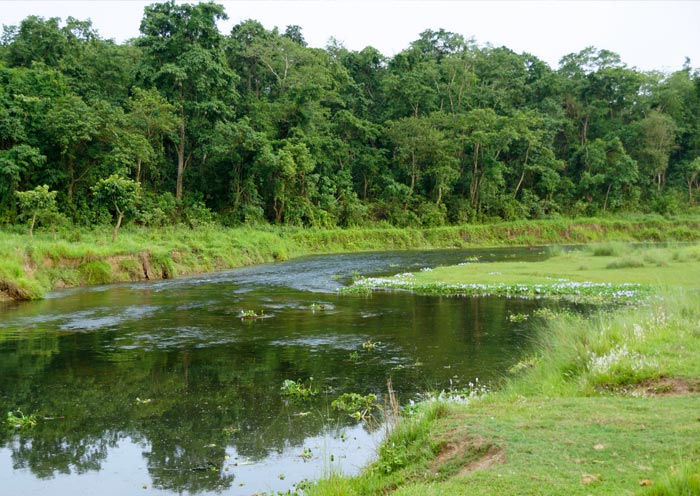
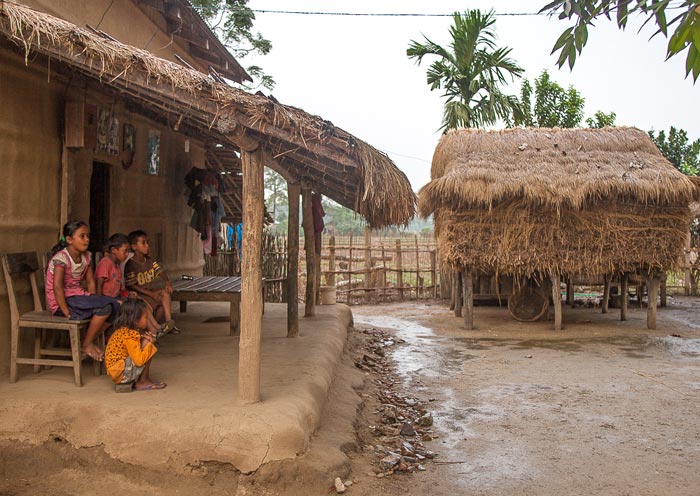
Chitwan National Park Tickets & Opening Hours
As of Feb 2025, the cost of a Chitwan National Park permit is approximately USD $20 for a foreigner, USD $10 for SAARC nationals, and USD $1.5 for Nepali nationals.
The ticket gives you access to Chitwan National Park where you can explore its rich biodiversity. However, please note that all prices for activities like jungle walks, treks, or safaris are separate and not included in the entrance fee. The Chitwan National Park is open from 06:00 AM to 10:00 PM.
Always check the latest information when planning your visit to Nepal's National Park. Alternatively, share your travel ideas, let's talk and Asia Odyssey Travel would come up with a perfect plan for your Chitwan Safari.
Facilities in Chitwan National Park
- Visitor Center: Located at Sauraha, it provides information on wildlife and conservation programs.
- Souvenir Shop: Offers a variety of handicrafts and other local products for gifts and souvenirs.
- Museum: Located at Kasara, the park headquarters, it has informative displays.
- Gharial Breeding Center: A short walk (1km) from the National Park HQ will take you to the Gharial Breeding Center, which is also home to the Marsh mugger.
- The Tharu Cultural Museum & Research Center: Situated in Sauraha, adjacent to the main entrance of the park, the site provides a comprehensive depiction of Tharu history, traditions, and way of life.
- Bikram Baba: Located at Kasara, it's a pilgrimage place for Hindus.
- Balmiki Ashram: Located in Tribeni, it's another important pilgrimage site for Hindus.
How to Plan A Trip to Chitwan & Nepal
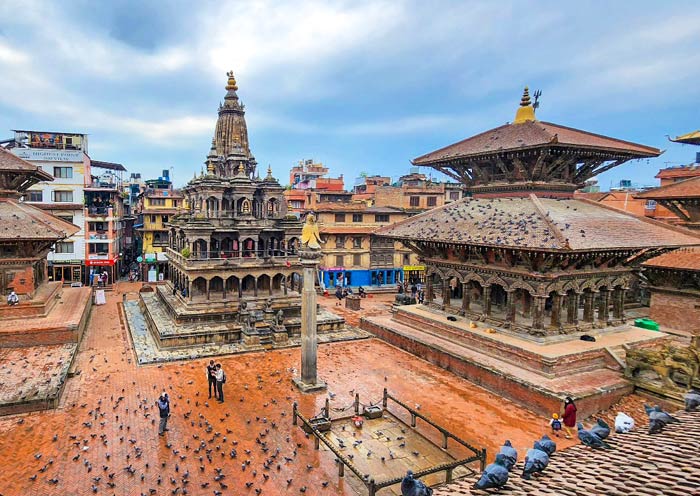
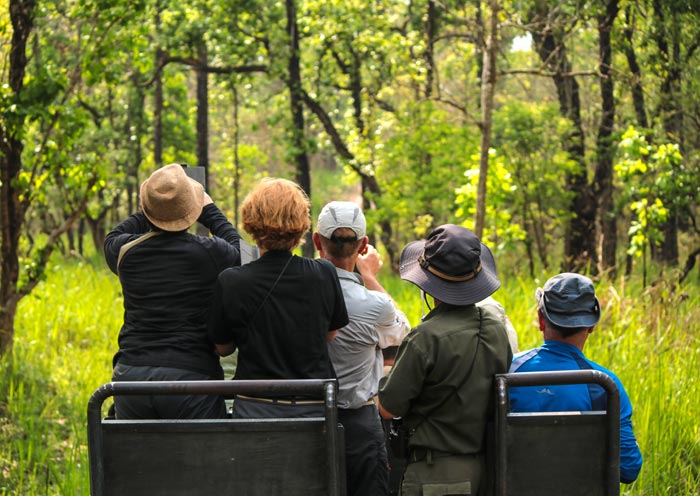
- Kathmandu (3 days), Temples & Thrum: Spend 3 days to explore the rich culture of Nepal. Swayambhunath's views, Pashupatinath's rituals, Boudhanath's Tibetan energy. Catch a glimpse of the Kumari & haggle for souvenirs in Thamel.
- Chitwan (2 days), Jungle Thrills: Allow 2 days in Chitwan National Park with more chance to spot rhinos, elusive tigers, monkeys on a safari. Canoe the Rapti, spot crocs & birds. Immerse in Tharu culture.
- Pokhara (3 days), Lakeside Bliss: Being an Outdoor adventure paradise, Pokhara is also a place to chill out. So spend 3 days there to unwind if time allows. Hike to World Peace Pagoda for panoramas, boat on Phewa Lake. Adrenaline rush: white-water rafting or paragliding.
- Beyond: Trek to Poon Hill for Annapurna views or embark on epic journeys like Everest Base Camp.
- Dive into the Himalayan: Allow more time for the Bhutan and Tibet regions and experience the different charms of each unique Himalayan region.
Travel with AOT, Embrace Nature in Chitwan National Park
Discover the magic of Nepal with Asia Odyssey Travel. With over a decade of expertise and deep-rooted local connections, we craft journeys that unveil the true essence of Nepal.
Start your unforgettable Chitwan Safari with Asia Odyssey Travel in The National Park of Nepal. AOT curates an experience that seamlessly blends thrilling wildlife encounters with unique accommodation in Nepal's National Park. Experience the thrills of the wild, responsibly.
Experience Nepal like never before with our commitment to exceptional service:
- Personalized Planning: Skip the research, let our experts craft your dream Nepal adventure.
- Peace of Mind: Flights, hotels, visa? We handle it all!
- Hiccups? We're your 24/7 travel guardian.
- Time-saving: One-stop shop, say goodbye to endless booking hassles.
- Journey with Awareness: AOT's local team ensures experiences that are culturally sensitive.
- Travel like a Local: Insider tips, secret savings, and authentic experiences await with our local guides.
Asia Odyssey Travel, Your Best Travel Mate. Turn Travel Dreams into Reality!
Contact us today. Your dream Nepal trip awaits!
If you have any questions about this article, please contact us by submitting the following form and we'll immediately get back to you.

